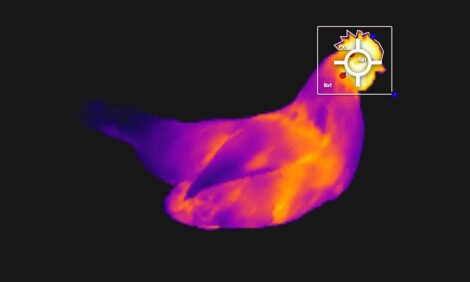



Exotic Poultry Diseases - An Update
By F. Dustan Clark, Extension Poultry Health Veterinarian at the University of Arkansas's Avian Advice - Eradication costs associated with exotic poultry disease outbreaks in the United States typically run about $1 million per day of the outbreak and these diseases have the potential to cripple or destroy the industry. Two diseases, Exotic Newcastle (END) and Avian Influenza (AI), are listed on the Office of International Epizootics “A” list of reportable diseases.| More on the Author | |
| Dr. Dustan Clark Extension Poultry Health Veterinarian |
|
Introduction
Outbreaks of both of these diseases have occurred recently in the United States. In addition, an Avian Influenza outbreak has recently occurred in Europe. Therefore, it would appear that an update is in order.
Exotic Newcastle
Exotic Newcastle disease was confirmed in the United States in California on October 1, 2002. The disease was present in a gamefowl flock in the Los Angeles area. The disease spread in Southern California and to two other states, Nevada and Arizona. In California, the disease involved backyard birds, hobby flocks, gamefowl and commercial table egg chickens. A total of 920 premises were positive for END in California. A total of 18,427 premises were quarantined. The number of commercial premises quarantined in the END outbreak was 22.
An outbreak of END was also reported in Nevada on January 16, 2003 and in Arizona on February 4, 2003. The virus in these outbreaks was the same strain as the END virus in California. In Nevada a total of 155 premises were quarantined with 10 premises positive for END. In Arizona 67 premises
were quarantined and only 1 premise was positive. No commercial birds were affected in the outbreaks in Nevada and Arizona.
An outbreak of END was also found in El Paso, Texas on April 9, 2003, but this virus was a different strain than the California virus. A total of 497 premises were quarantined in Texas with only 1 premise positive for END. A federal quarantine was also placed on 2 counties in New Mexico. No commercial birds were affected in the Texas END outbreak.
The disease has been eradicated in Nevada, Arizona, and Texas. No new positives have been seen in California since May 31, 2003. The cost of eradication is still to be determined, but trade costs impacts have been estimated to be over $77 million in direct trade costs and over $74 million in indirect trade costs. A total of 3, 923,678 birds were depopulated in California to date.
The numbers of birds depopulated in the other states are as follows: 2,746 in Nevada, 269 in
Arizona, and 1,871 in Texas. Most of the federal quarantines in all states except California have
been lifted and authorities are working in California to lift the quarantines as soon as possible.
Avian Influenza
High Pathogenic Avian Influenza (HPAI) was confirmed in the Netherlands on March 31,
2003. This was the first case of HPAI ever reported in that country. Massive eradication and cleanup procedures were undertaken and the last positive case was reported on May 23, 2003. A total of 255 farms were found to be infected with HPAI and approximately 27 million birds were
depopulated during the outbreak. All poultry exports were banned from the Netherlands during the
outbreak.
The HPAI outbreak in the Netherlands spread to Belgium with HPAI confirmed in Belgium
on April 18, 2003. This outbreak was also Belgium’s first ever recorded HPAI. Like the
Netherlands, Belgium undertook extensive containment and control measures. The last positive
case in Belgium was reported on April 28, 2003 and restrictive measures except for surveillance
were lifted on June 12, 2003.
HPAI was also confirmed in Germany on May 13, 2003. Only one premise was affected.
Control measures for the disease in Germany were lifted on June 25, 2003. The outbreaks in Europe
are considered over with only surveillance efforts still in place in the affected countries. It is
estimated that 30 million birds were depopulated during the outbreaks with 90% of these in the
Netherlands.
Low Path Avian Influenza (LPAI) was diagnosed on March 5, 2003, on a table egg farm in
Connecticut. The virus was identified as H7N2 similar to the type in the Virginia outbreak in 2002.
Two Connecticut poultry facilities are currently under quarantine. Both of the facilities are multihouse, multi-age egg layer operations and are located near Lebanon and Bozrah, Connecticut. The number of birds under quarantine is approximately 4.7 million. Surveillance efforts are being
conducted in the New England states to check for possible spread of the disease. Swab samples
taken in April in Rhode Island were positive for H7N2 virus similar to LPAI found in the live bird
markets of the Northeast. The premise sampled in Rhode Island is under state quarantine and
surveillance is continuing. Most LPAI strains cause few (if any) clinical signs in infected birds;
however, some strains are capable of mutating into HPAI.
Summary
Exotic poultry diseases have the potential to cripple or destroy the industry. Since exotic
poultry diseases are continually present worldwide, vigilance and biosecurity are necessary to
prevent a devastating outbreak in the poultry industry.

Source: Avian Advice - Fall 2003 - Volume 5, Number 3








